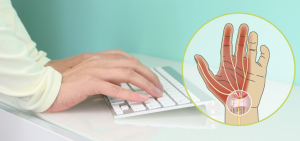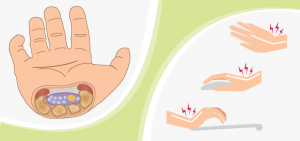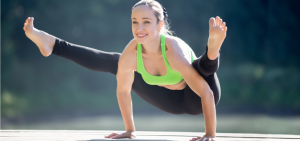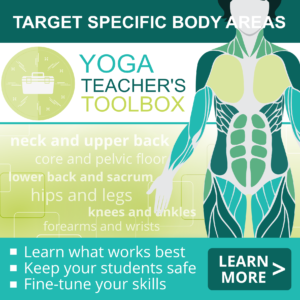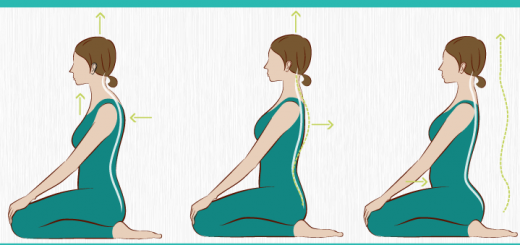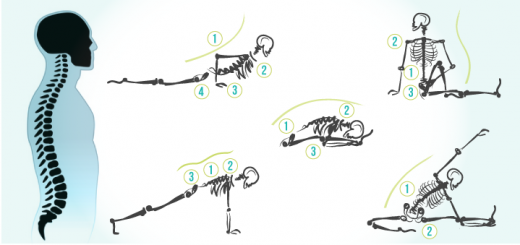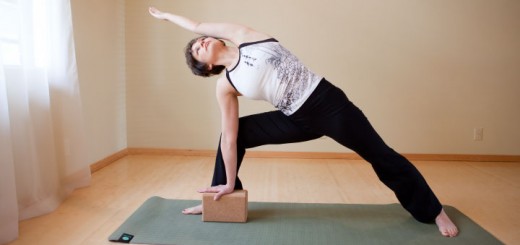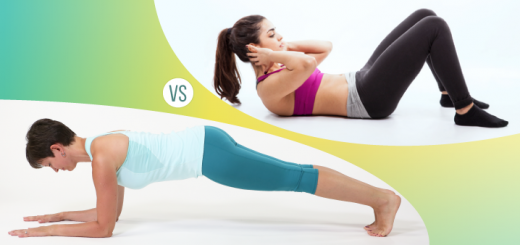
Whenever you plan to work with hands, wrists and forearms in your yoga class or private yoga session, it helps to remember the following important points:
- Wrist problems are very common with people who use their hands/fingers a lot (office workers, assembly line workers, construction workers). Those problems are often related to transverse carpal ligament, which forms the infamous carpal tunnel. This ligament creates a bottle-neck structure at the base of the hand; tendons and the median nerve pass through that opening. If the opening becomes smaller (synovial sheaths at the wrist can grow bigger and thicker from constant finger use), or the tissues between the ligament and bones become inflamed, they can compress the tendons and nerves, which leads to pain in the hand, wrist and forearm.
- There are multiple factors that can cause wrist pain. They include repetitive use (Ex: lots of typing and mousing), systemic diseases (Ex: diabetes, hypothyroidism, lymphedema, rheumatoid arthritis), sudden impact (Ex: breaking a fall with your hand), neck injury (Ex: herniated disks) and ganglion cysts (small fluid-filled lumps that can show up on the wrists and hands). It’s important to consider all those possibilities when working with wrists.
- Treatment of wrist pain cannot be focused on the wrist alone, it has to involve fingers, hands, wrists, forearms, shoulders and even upper back.
- Ergonomics plays an important role in wrist pain management – hand positions during typing, mousing and other activities MUST be analyzed and improved upon.
- Those who have wrist pain should avoid yoga poses that require bearing weight on your hands, specifically the ones that place your wrists in hyperextended position (Plank, Downward facing dog, any arm balances). Begin working with wrists in non-weight bearing positions.
- Forearm and wrist muscles get tight and tense just like the muscles elsewhere in the body. To relieve this tension, you can recommend small movement breaks for the hands during the day, and you can get creative and add the simplest hand movements to traditional poses in your yoga practice.
- In arm balance postures the weight of the body is supported by the arms and hands, which means that arm balances both require and develop strength in the arms, shoulder girdle and wrists. Before attempting any arm balances you need to evaluate risk vs benefit ratio for every student.
- Always spend adequate time warming your neck, shoulders, upper back and wrists before you attempt to do arm balances, but don’t tire them out too much, otherwise you won’t have energy left for your arm balances. Do not do too many arm balances in one practice.
- The ability to do arm balances is NOT an indicator of the quality or effectiveness of your yoga practice.
Sequence Wiz blog posts about hands, wrists and forearms
Your wrist is a pretty complex structure that consists of eight small bones, ligaments and tendons. The most famous of them all is transverse carpal ligament, which forms the infamous carpal tunnel. This ligament creates something like a bottle-neck structure at the base of the hand; tendons and the median nerve pass through that opening. If the opening becomes smaller (for whatever reason) or the tissues between the ligament and bones become inflamed, they can compress the tendons and nerves, which leads to pain in the hand, wrist and forearm. Read more >
The first order of business when dealing with wrist pain is to analyze your repetitive hand activity and either eliminate it (if possible), or change your hand position, so that your wrists remain in a neutral position when you do it. Once the repetitive hand positioning has been addressed, you can begin to follow the protocol of contract-relax-stretch for releasing tension in your hand and forearm muscles. Read more >
Yoga practice for wrists and forearms
The easiest way to work with wrists and forearms is to add different hand movements to your existing yoga practice. You can be very creative with your hand gestures, just make sure that you include both wrist flexion and extension and move your fingers. Read more >
Arm balance poses: fun challenge or necessity?
How often do you walk on your hands? Some Instagram feeds will have you believe that mastering a handstand is an essential indicator of progress in yoga. But the reality is that we were not designed to carry our body weight on our hands. This becomes obvious once you compare the structure of the hip joint (meant to be weight bearing) and shoulder joint (not meant to be weight bearing). Read more >
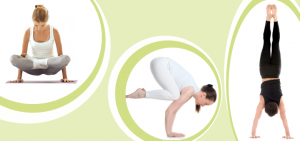
Three types of arm balances and their characteristics
It seems like many students become infatuated with arm balances when they get into yoga. It’s not surprising – those types of poses give you a good physical challenge and mastering them makes you feel strong and capable. There are a few things to be aware of though when it comes to arm balances. So today we will compare three types of arm balances and the challenges that they place on the body. Read more >
Sample yoga practices
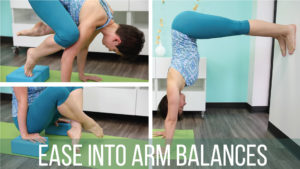 |
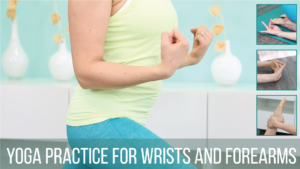 |
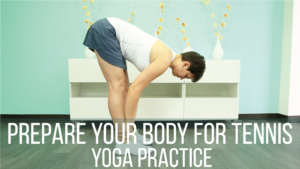 |
Featured Wrist Favorites from the sequence builder
When you use Sequence Wiz yoga sequence builder, you can choose a body area and get suggestions on poses that work best to address it. Each option includes poses, reasons for using them and movement instructions. You can easily add those poses to your sequence. Give it a try >
As yoga teachers, we want to help our students feel better in their bodies. This means that often we need to work with specific areas of tension and imbalance. What does it take to create an effective practice to release tension and increase range of motion in a particular part of the body? Some principles are universal, and some are unique to the target area. Here are some ideas on how you can approach it in your yoga classes, as well as some safety precautions that we need to consider. Check it out >
[jetpack_subscription_form]

